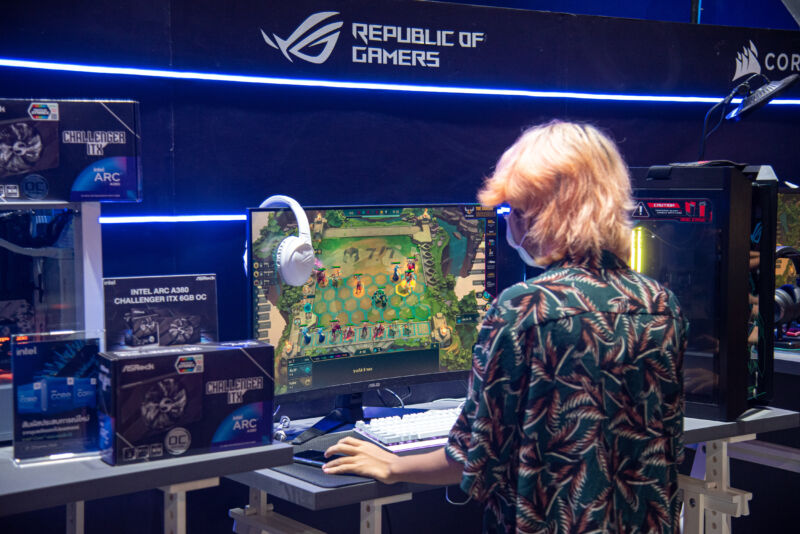
Peerapon Boonyakiat/SOPA Images/LightRocket via Getty Images
PC gamers may be concerned about losing their jobs in 2023, but not so much that they can ignore a glut of new GPU and ultra-widescreen monitor options.
That’s the elevator-pitch version of Jon Peddie Research’s report on PC gaming hardware sales and costs. At a high level, it suggests that while mid-range gaming will see only gradual growth from 2023 through 2025, both entry-level and high-end hardware should see notable upticks through 2025. The market should recover more than $5 billion overall from its 2022 drop-off, with the high end taking $3.92 billion and entry level $2.29 billion.

PC gaming market figures from JPR.
Reading exactly which bits of PC hardware fit into which segment, and getting more detail on how JPR put these numbers together, costs even more than a 40-series Nvidia card, at $27,500 per year for access. So we’re left to wonder which cards, monitors, chips, and other gear fit into entry-, mid-level, and high-end. But JPR does suggest a few factors moving the numbers around:
- “Focus by manufacturers” in high-end, “but at the expense of developing mid-range offerings”
- Intel’s entry into discrete graphics (entry-level)
- AMD’s “older GPUs,” now discounted to entry-level prices.
- A recovering economy and a “system replacement refresh cycle” in 2024
- Ultra-wide and super-high-res displays at “lower” prices ($320)
None of those forecasted trends seems irrational, although wider monitors with higher-refresh rate, at the entry- and mid-level price points seem more likely to take off in the next couple of years than 8K, which is still in its infancy. With the crypto mining market for GPUs having finally abated, and with Intel and AMD offering far more options below the high end, a reasonable but notable boost in entry-level system purchases could be viable.
Then again, nearly every other piece of hardware inside a gaming PC has recovered from pandemic-level pricing. Gigantic, insanely fast NVMe drives are constantly being offered and discounted. AMD is offering gaming-focused CPUs not only at the high end, but at a mid-tier level that unlocks the potential of higher-end cards. That leaves motherboards, power supplies, memory, and other components, which in most normal people’s self-built gaming PCs are some mixture of entry, mid, and high-end. It’s a strange market to track and think about; I’m impressed JPR is even attempting to make sense of it.
Credit: Source link
